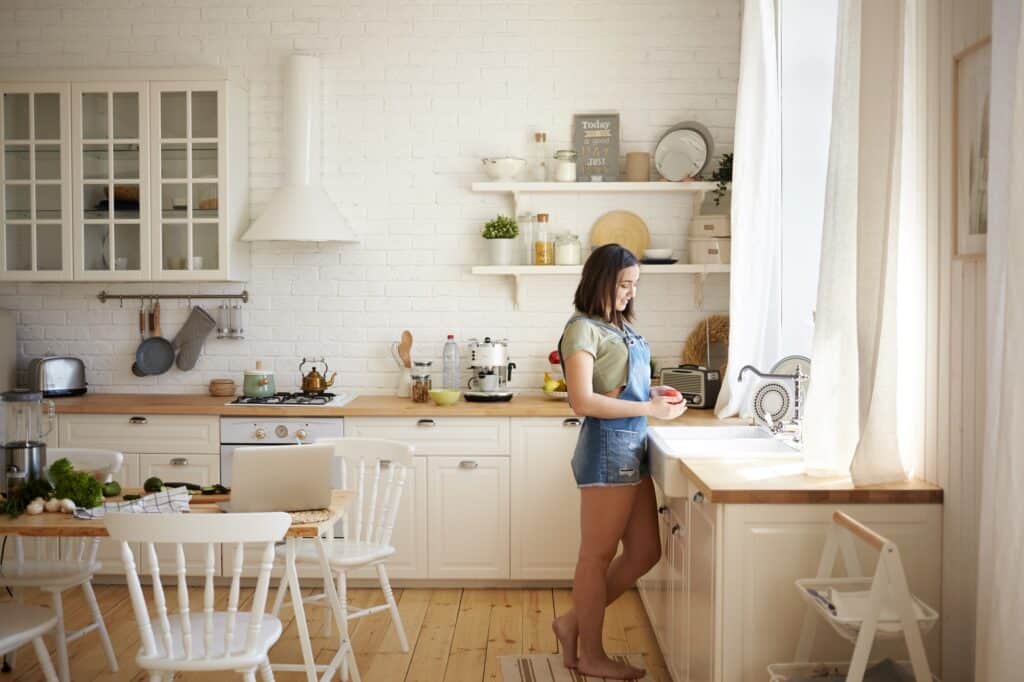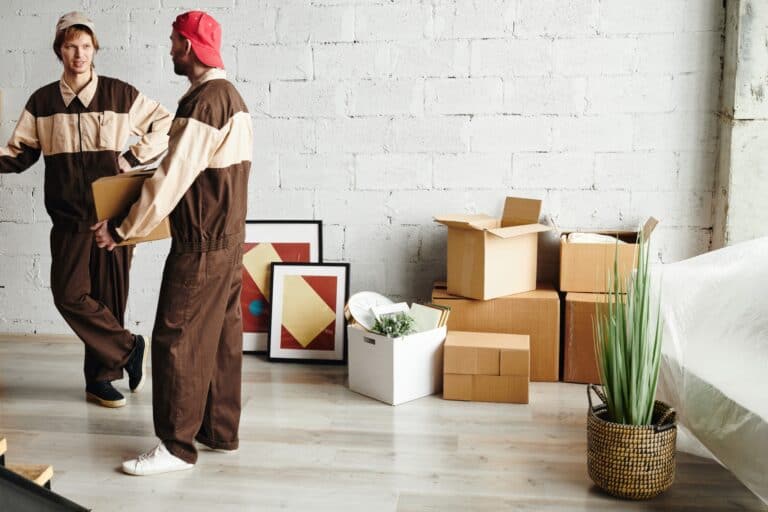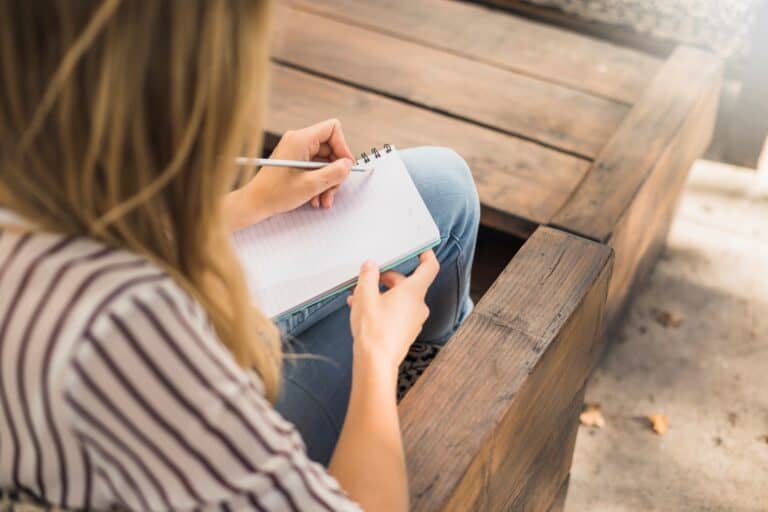Want to know how to pack and unpack for a home removal efficiently? This comprehensive guide offers clear, practical steps to make your move stress-free and seamless. Discover expert packing tips and strategies on how to declutter, organise your packing process, and set up quickly in your new house. From gathering essential packing supplies to creating an essentials box, let’s dive into the best tips for an efficient move, ensuring minimal stress and maximum efficiency.
Key Takeaways
- Declutter early by sorting items into keep, sell, and donate piles to create more space, reduce packing stress, and make your new house more organised from the start.
- Gather quality packing supplies such as sturdy cardboard boxes, packing paper, bubble wrap, and packing tape, and make a room-by-room packing strategy, labelling boxes for efficient unpacking and easy identification.
- Start unpacking with essentials like toiletries, cooking utensils, and important documents, and follow a systematic approach, disposing of packing waste responsibly to settle in smoothly and maintain a clutter-free environment.
Declutter and Sort Before Packing
Before you even think about packing, take a step back and declutter. Decluttering helps create a more manageable and organised space in your new house. Eliminating unnecessary items saves money and reduces the number of boxes needed. Plus, there’s no point in moving things you no longer want or need.
Start by categorising your items into three piles: keep, sell, and donate. This will streamline the decluttering process and make it easier to decide what to do with each item. Consider the condition and usefulness of each item before making a decision. Remember, the goal is to have fewer boxes and more organised packing space.
Start decluttering as early as possible to give yourself ample time. Begin with rooms you use the least, such as the attic or basement, and work your way through the house. This way, you’ll gradually create more packing space and make the entire packing process more efficient.
Get Your Packing Supplies Ready
Gathering the right packing supplies is essential for an efficient move and to protect your belongings. Sturdy cardboard boxes, packing paper, bubble wrap, and packing tape are essential supplies for packing. These items help ensure the safety and security of your belongings during a move. Investing in high-quality packing materials reduces the risk of damage to your belongings during the move.
Utilise existing items like suitcases and storage boxes to save space and reduce the number of packing boxes needed. Items like egg cartons or toilet paper rolls can keep jewellery organised and untangled during the move. Wardrobe boxes are perfect for packing hanging clothes quickly and efficiently.
Don’t forget to stock up on additional supplies like box cutters, adhesive bandages, and permanent markers. These items will streamline the packing process and ensure that all your essentials are at hand when you start packing.
Make a Packing Strategy
A good packing strategy can make a world of difference. Start packing by selecting non-essential items first. This will create more space and maintain functionality in your living area throughout the packing process. It’s also wise to start packing preparations at least 2-3 weeks before the move to avoid last-minute stress.
Utilise a room-by-room strategy to enhance organisation and efficiency. Label each box with its contents and corresponding room to simplify the unpacking process and aid in maintaining an organised inventory. This way, you can unpack efficiently and ensure that all your boxes end up in the right place.
Pack Smart and Efficiently
Packing smartly can save you time, space, and stress. Use items like bedsheets and towels to wrap breakable goods in an eco-friendly way. The ‘Tetris method’ can help optimise space in your packing boxes by arranging items carefully. Rolling clothes instead of folding them can also maximise space in your packing boxes. For more effective strategies, consider these packing tips.
This section will delve into three key areas: choosing the right box sizes, safeguarding fragile items, and breaking down large items for moving. These tips will help you pack efficiently, protect your belongings, and make the unpacking process a breeze.
Choose the Right Box Sizes
Using the right size boxes is crucial for maximising packing space and protecting your items. Large boxes should be reserved for light items like bedding and pillows, while heavy items should be packed in smaller boxes to prevent damage to other items. Overloading packing boxes can make them difficult to carry and increase the risk of breaking. Additionally, it’s important to pack boxes properly to ensure everything is secure during transport.
Make sure to place the heaviest boxes toward the front of the moving truck to prevent them from crushing lighter items. Label each box clearly to ensure they end up in the right room, making the unpacking process more efficient.
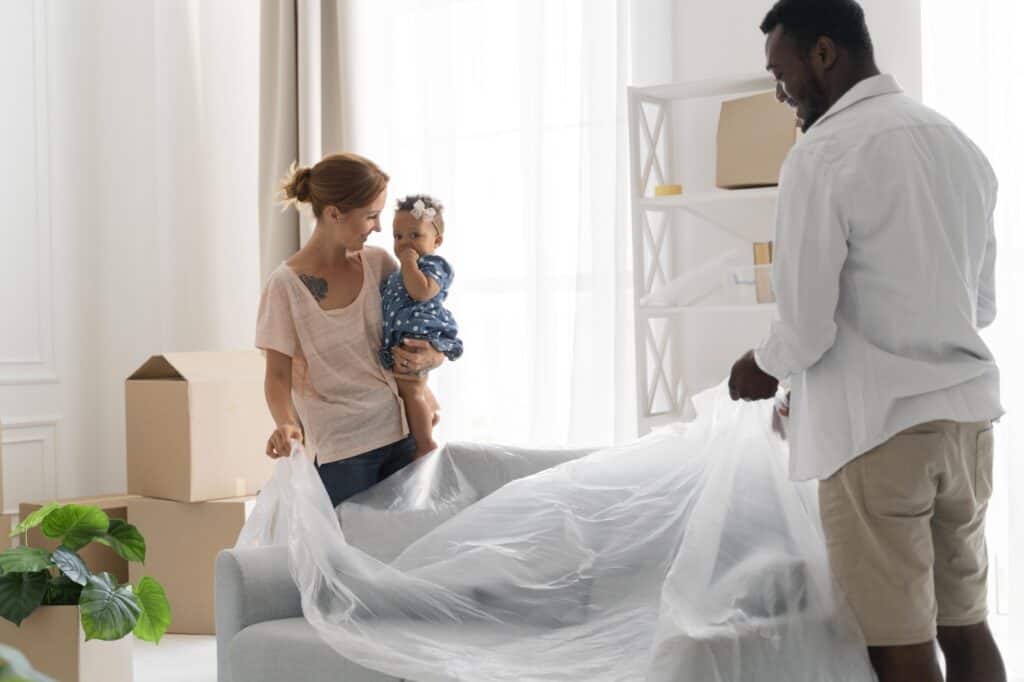
Safeguard Fragile Items
Fragile items require extra care during the packing process. Wrap them in packing paper or bubble wrap, use sturdy boxes, and pack dishes on their sides with added padding. For packing glasses, use a box with cardboard dividers and layers of paper for added protection.
To protect framed pictures, use masking tape to create an X across the glass and wrap them in paper or bubble wrap. Once you have packed a box of fragile items, gently shake it to see if anything shifts. If you notice any movement, add additional padding to secure the contents.
Break Down Large Items for Moving
Dismantling larger pieces of furniture helps protect them during the move and saves space. Disassembling furniture is crucial as it prevents damage during transport. Use blankets and tape to wrap big or valuable furniture pieces for added protection.
Labelling parts and keeping screws in bags can simplify the reassembly of disassembled furniture. This will make setting up your new home much easier and more organised.
Pack a Must-Have Essentials Box
An essentials box is a lifesaver during the moving process. It keeps necessary items at hand, ensuring you have everything you need without rooting through unpacked boxes. This box should include toiletries, a change of clothes, basic cooking utensils, a phone and charger, toilet paper, washing-up liquid, a dishcloth, a basic toolkit, snacks, drinks, a torch with batteries, and an emergency first aid kit.
Typical items also include medications, important documents, and basic kitchenware. Pack the essentials box last, preferably a few days before the move. This way, you’ll have all your essentials ready and won’t have to search for them in the chaos of moving.
Preparing a moving day survival box in advance can help keep essential items organised. Keep valuable and sentimental items close to ensure they are secure and easily accessible on a moving day.
Preparing Appliances and Electronics
Preparing appliances and electronics for moving requires special attention. Clean and dry appliances before packing to prevent mould growth and unpleasant odours during transit. Secure cords and accessories to prevent damage and make unpacking easier.
Whenever possible, use the original packaging for electronics to provide added protection. If the original box is unavailable, pack plasma TVs in special wooden crates or double boxes using packing paper. Defrost large appliances like refrigerators at least 24 hours before moving. Cling film can be useful for keeping items in drawers stable during the move.
RECOMMENDATION
Before disconnecting appliances, consult the user manual. It contains important instructions for transport preparation.
Tips for Moving Day Success
Moving day can be hectic, but starting early and staying organised can make a big difference. Start the day early to maximise productivity and handle unexpected challenges. Stay hydrated and take breaks to maintain your energy levels and reduce stress.
Plan activities for pets and children to improve safety and reduce distractions. Keeping a charged mobile phone on hand helps facilitate communication with movers and manage emergencies. Carrying the essentials box with you rather than loading it onto the moving truck ensures you have what you need immediately, including phone and computer chargers.
Unpacking Made Easy
Unpacking can feel overwhelming, but with a systematic approach, it becomes manageable. Start by reviewing box labels or opening them to identify contents. Unpacking systematically, starting with essentials and then moving on to less urgent items, reduces stress and allows more time to settle in.
This section will cover starting with the essentials, unpacking room by room, and disposing of packing waste responsibly. These tips will help you unpack efficiently and with minimal stress.
Start with the Essentials
Begin unpacking with the essentials box prepared for moving day. This box contains vital items for the first few days, such as toiletries, medications, and important documents. Before unpacking boxes, check box labels or look inside to prioritise essentials.
In the bathroom, unpack essentials like towels, toiletries, and the shower curtain. Next, focus on unpacking the kitchen, starting with major appliances, pots, and pans for food preparation. Label boxes for kitchen items to speed up the process.
Unpack Room by Room
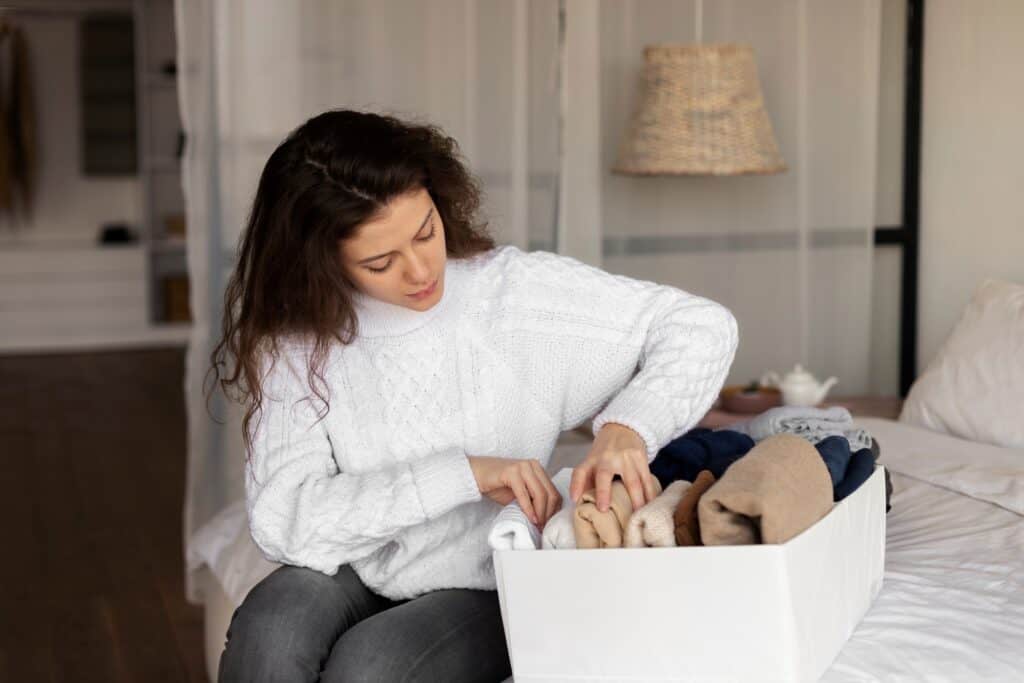
A room-by-room unpacking strategy is the most efficient approach. Start with the kitchen, then move to bedrooms and bathrooms. This method helps maintain organisation and ensures that the most important rooms are set up first.
Prioritising items of importance allows you to leave the least crucial items until last. Last, unpack the items for the patio or landscape. You can set them up at your convenience. Labelling boxes clearly is important to easily place them in the relevant room and clear space.
Dispose of Packing Waste Responsibly
Flatten and set aside empty boxes and packing materials to maintain organisation in empty spaces. Disposing of packing materials promptly helps in maintaining a clean and organised new space. Have a system for disposing of materials like boxes and bubble wrap as you unpack.
A clutter-free environment contributes to a more comfortable and efficient unpacking process. Manage packing waste responsibly to simplify your move and settle into your new home more quickly.
Consider Professional Assistance if Needed
Hiring professional movers can make your moving house much easier. Professional movers possess the necessary expertise to handle packing securely, minimising the risk of damage. Engaging a moving service offers insurance and liability coverage, providing peace of mind during a relocation.
Using professionals can lead to overall cost savings when considering hidden costs of DIY moves, such as renting trucks. Packing services offered by removal companies can provide extra protection for specialist items. A full packing service saves time and provides professional packing of items.
If you’re feeling overwhelmed by the moving process, seeking professional help is a wise decision. Consider hiring professional movers, especially for large valuable items like pianos or antique furniture.
Summary
Moving house can be a significant challenge, but with proper planning and efficient packing strategies, it can be a smooth and less stressful experience. By starting with decluttering, gathering the right packing supplies, and creating a packing strategy, you set the foundation for a hassle-free move. Smart packing techniques, such as choosing the right box sizes, safeguarding fragile items, and breaking down large items, further ensure the safety of your belongings.
Don’t forget the importance of an essentials box, preparing appliances and electronics properly, and following tips for moving day success. Once you arrive at your new home, a systematic approach to unpacking and responsibly disposing of packing waste will help you settle in quickly. If the process feels overwhelming, hiring professional movers can make a world of difference. With these expert tips, your move to Croydon is bound to be a success!
Frequently Asked Questions
Why is decluttering important before packing?
Decluttering before packing is crucial because it simplifies your move by reducing the amount of unnecessary items you take with you, saving you time and effort. Plus, it helps create a more organised space in your new home right from the start.
What are some essential packing supplies I need?
You’ll definitely want sturdy cardboard boxes, packing paper, bubble wrap, and packing tape for your move. Don’t forget a box cutter and permanent markers to make the process smoother!
How can I protect fragile items during the move?
To protect your fragile items during the move, wrap them in packing paper or bubble wrap, and use sturdy boxes with added padding. Don’t forget to pack dishes on their sides and utilise dividers for glasses to keep everything safe!
What should I include in my essentials box?
Make sure your essentials box has toiletries, a change of clothes, cooking utensils, a phone charger, toilet paper, a basic toolkit, snacks, drinks, a torch with batteries, and a first aid kit. This way, you’ll be prepared for anything!
When should I consider hiring professional movers?
If you’re feeling overwhelmed or have large valuable items to move, it’s definitely time to consider hiring professional movers. They can manage the packing and ensure everything is secure and insured.
